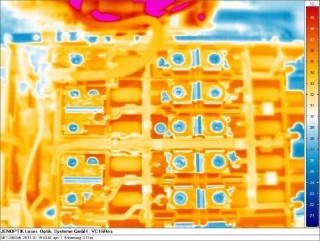
Thermal Characterization of Automotive Batteries at Fraunhofer ISE.
Project in the Business Area: Hydrogen Technologies and Electrical Energy Storage; Topic: Battery Engineering, Applied Storage Systems; Duration: 08/2022 - 07/2025
more info
Thermal Characterization of Automotive Batteries at Fraunhofer ISE.
Project in the Business Area: Hydrogen Technologies and Electrical Energy Storage; Topic: Battery Engineering, Applied Storage Systems; Duration: 08/2022 - 07/2025
more info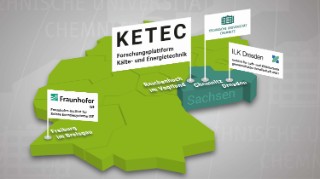
Partners and location of the KETEC research partners involved.
Project in the Business Area Energy-Efficient Buildings; Topics: Building Operation Management, Heat Pump, Duration: 03/2021 - 04/2025
more info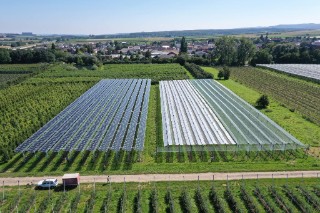
The experimental setup compares five different variants.
The agricultural sector is facing new challenges. In the wake of climate change, strategies must be developed to avoid negative impacts on harvests. Orcharding in Germany is already affected by the consequences of climate change: rising temperatures, changes in precipitation distribution and increasingly frequent extreme weather events such as hail and heavy rain. As a result, commercial fruit growers are increasingly using hail protection nets and foil roofing to prevent quality and yield losses. The project "APV-Obstbau" (Agrivoltaic Orcharding) will investigate to what extent agrivoltaics can replace these protective measures in apple cultivation, which system design makes sense for this crop and in which way the agrivoltaic system affects crop yields. | Duration: 04/2020 - 03/2025
more info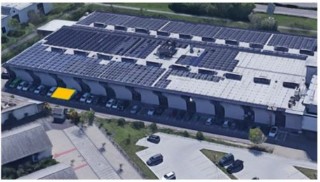
Planned location of the battery storage system with fast charging station at the ISE site "Haidhaus".
Lithium-ion batteries used as energy storage are a key element of the energy transition. This type of battery is being used in ever greater numbers, especially in electromobility. At the end of their life in the vehicle, the batteries can continue to be used in stationary storage before being recycled. Even though this significantly minimizes the CO2 footprint and makes the recycling economy more effective, many new questions arise, e.g. about the qualification of the cells, cooling and the integration of stationary storage into the infrastructure. These issues are being investigated in detail in the ecoLEPuS project. | Duration: 09/2022 - 05/2026
more info
Silicon-carbon composite as active material for the production of silicon-based anodes for lithium-ion batteries in the SICOM-LIB development project.
Project in the Business Area: Hydrogen Technologies and Electrical Energy Storage; Topic: Battery Cell Technology; Duration: 01/2022 - 12/2024
more info
The Magaldi Beam down power plant with the secondary reflector central.
Project in the Business Area: Solar Thermal Power Plants and Industrial Processes Topic: Solar Thermal Power Plants Duration: 04/2022 - 03/2025
more info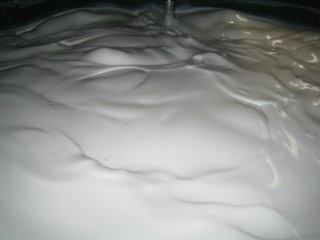
PCM emulsion in a container .
Project in the Business Area: Energy-Efficient Buildings, Solar Thermal Power Plants and Industrial , Topics: TThermal Storage for Buildings, Thermal Storage for Power Plants and Industry, Duration: 05/2021 - 04/2026
more info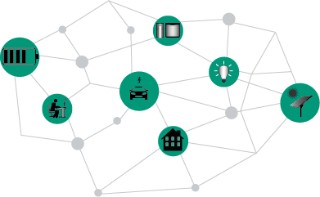
Networked energy agents.
In this project, we are developing cooperative software energy agents for several distributed controllable systems (heat pumps, electric cars, battery storage), which communicate with each other and act according to defined rules of trade with high temporal resolution. In doing so, agents pursue the individual goals of their respective users, while also keeping an eye on the neighborhood as an overall system. A specific goal in the sub-project is the allocation and accounting of energy quantities using block chain technology. It provides the end user with a transparent overview of their current green electricity share and creates incentives for load shifting. | Duration: 10/2017 - 09/2022
more infoDistrict and Process Heat Supply by Heat Pumps As a Substitute for Coal Combustion; Subproject: Planning, Construction and Operation of a GWP Test Plant
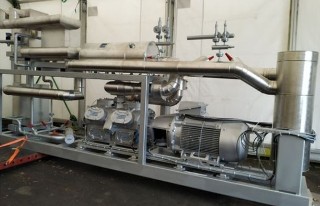
Prototype of a high-temperature butane heat pump.
With the phase-out of coal-fired power generation, not only will large amounts of power generation capacity be lost, but also gigawatts of thermal capacity in district heating networks that will have to be replaced by low-CO2 alternatives. Large-scale heat pumps at former power plant sites that feed heat into existing district or local heating networks are a promising alternative to decentralized solutions, especially in densely built-up urban areas. The project aims to reduce the barriers to the timely integration of large-scale heat pumps into district heating systems, both from a technical and an economic point of view. | Duration: 10/2021 - 09/2025
more info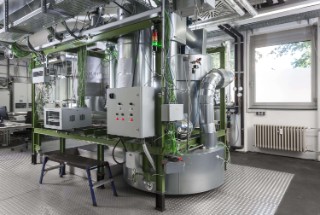
Existing single media molten salt storage system which is converted to a dual media storage system for tests within the project.
The aim of the project is to develop and optimize cost-efficient filler materials for high-temperature storage systems and to test a high-temperature storage system in an industrial application. The application area of the filler materials is thermal storage for waste heat recovery as well as solar thermal and fossil power plants with liquid heat transfer media (thermal oil or molten salt) or with gaseous heat transfer media such as air. | Duration: 03/2019 - 08/2022
more info